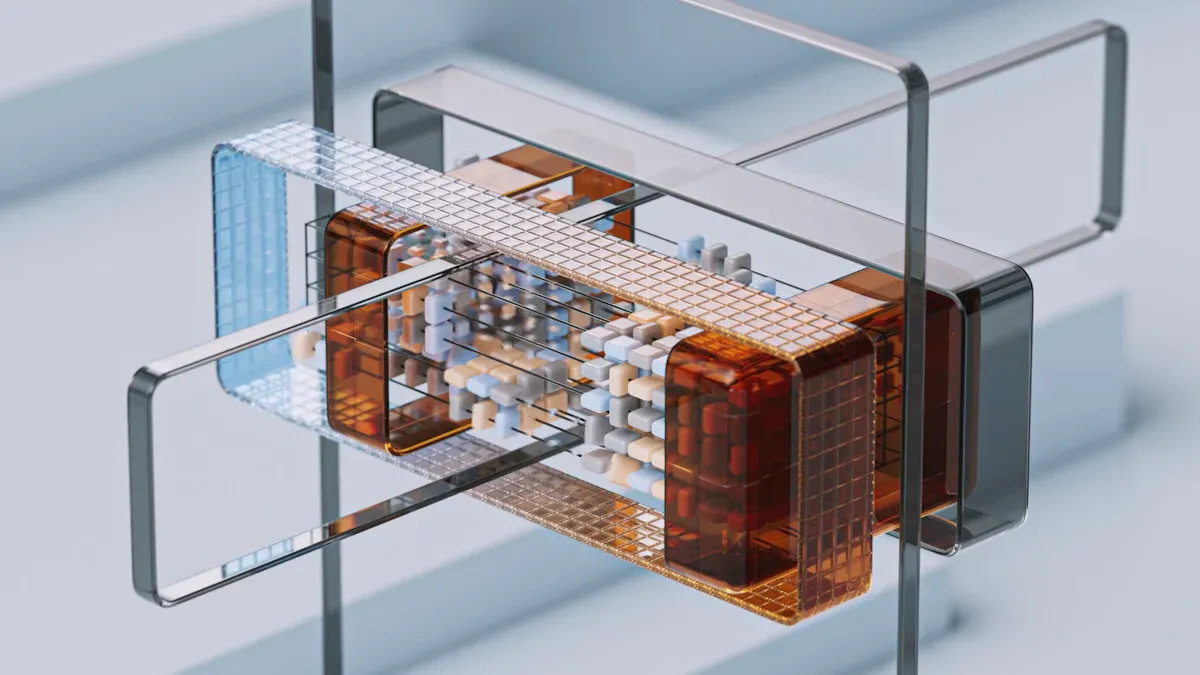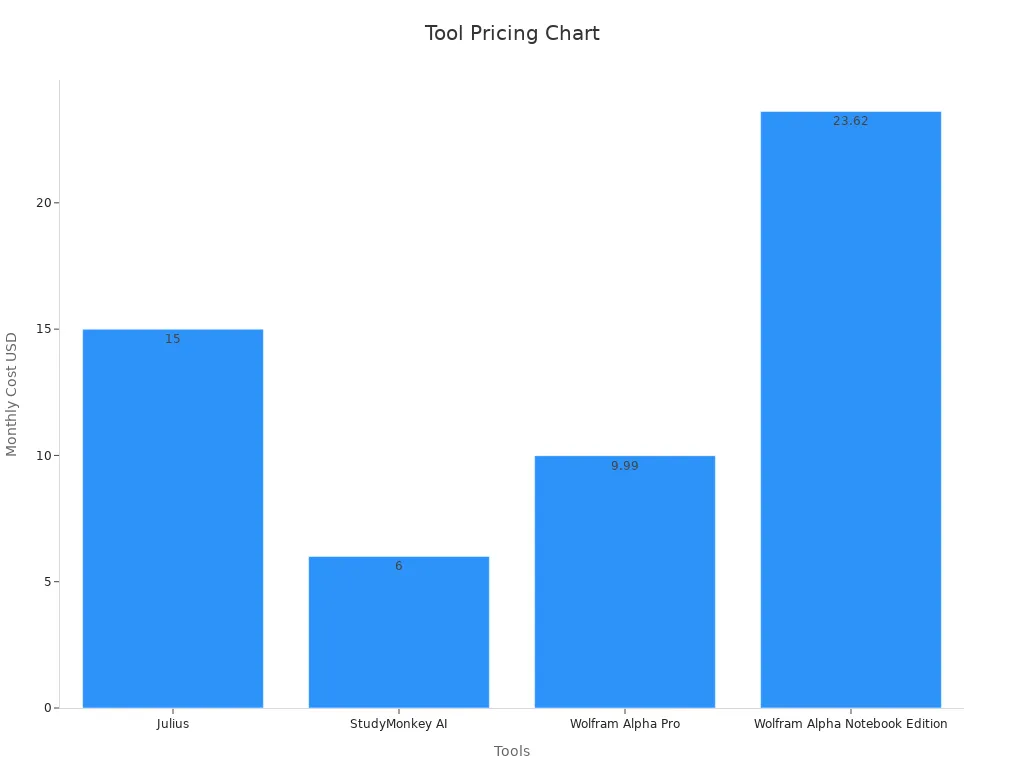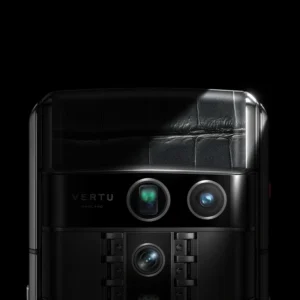
Imagine transforming a picture into a stunning 3D generation quickly. AI makes this a reality now, no longer just a dream. AI tools take on the hard work for you, completing tasks that once took hours or even days. You can create 3D generations swiftly, regardless of your skill level. These tools are also affordable, eliminating the need for expensive software. Plus, you don’t require special training to use them. AI manages the complex aspects, allowing you to concentrate on your creativity. With AI, producing 3D generations is easier and more beneficial than ever.
Key Takeaways
-
AI turns flat pictures into 3D models fast, saving time. You can make cool models without needing special skills.
-
Pick the right AI tool for your project. Beginners can try free tools like Meshy AI. Experts might like Blender for more features.
-
Use clear pictures or detailed text prompts for better results. Good inputs make better 3D models, so take your time.
-
Save your 3D models in the right format for your work. Use .OBJ for most projects and .FBX for video games.
-
AI-made 3D models are changing fields like gaming, healthcare, and schools. Try these tools to boost your creativity and work.
The Role of AI in 3D Generation

How AI changes 2D pictures into 3D models
Have you thought about how a flat picture becomes 3D? AI makes this easy to understand. It looks at details in a 2D picture, like patterns and depth. Then, it uses this data to build a 3D version. This process is called 2D to 3D conversion. It’s like turning a flat drawing into something real.
For instance, imagine you have a photo of a chair. AI studies its edges, shadows, and colors. It figures out the shape and creates a 3D model of the chair. This technology is so smart that it can even handle tricky things like buildings or faces. You don’t need special skills to use it. AI does the hard work, so you can focus on your ideas.
Important tools: photogrammetry, neural networks, and depth estimation
AI uses some cool tools to make 3D models. One of them is photogrammetry. This tool takes many pictures of an object from different sides. Then, it combines them to make a detailed 3D model. It’s great for objects with lots of details.
Neural networks are another big help. These systems learn from tons of pictures and 3D models. They guess how a flat picture should look in 3D. Depth estimation is also important. It helps AI figure out how far parts of an object are from the camera.
Here’s how these tools work in real life:
|
Study |
Results |
How It Was Tested |
|---|---|---|
|
Made a system to study road textures in real-time. |
Checked road surface safety in real-time. |
|
|
Puzzo et al. |
Created a way to measure texture depth very accurately. |
Compared results with older methods (R² = 0.99). |
|
Liang et al. |
Built a method to filter 3D road data with low error. |
Got 3.28% error using a special filter method. |
|
General |
Image-based methods are better than older techniques. |
Proved through many road studies. |
These tools make AI 3D modeling faster and better. Whether you’re making a small model or a big project, these tools give great results.
New ideas in text to 3D modeling
Text to 3D is one of the coolest new ideas in AI. Instead of starting with a picture, you just describe what you want. AI then makes it for you. For example, type “a flying robot with blue lights,” and AI creates a 3D model of it.
This works because of smart neural networks trained on huge datasets. These networks know how words and pictures connect. They read your text and turn it into a detailed 3D model.
Text to 3D is great for creative work. It saves time and gives you endless options. You don’t need to draw or find pictures. Just explain your idea, and AI will make it real.
Step-by-Step Guide to Using AI for 3D Generation
Picking the best AI tool for your project
Finding the right AI tool for 3D modeling can seem tricky. Start by thinking about what you want to create. Are you making something simple or a detailed, realistic model? Some tools are better for specific tasks, like adding textures or turning pictures into 3D models. For example, Blender is great for experts, while Meshy AI is easier for beginners.
Think about features and cost too. Free tools are good for practice, but paid ones often have more advanced options. Look for tools with tutorials or community help. These can make learning faster and solve problems easily.
Tip: Not sure where to start? Try free tools first. Once you’re confident, explore paid tools for harder projects.
Getting images or text prompts ready for the best results
Good input gives better output. Whether you use pictures or text prompts, preparation matters. For pictures, make sure they are clear, bright, and show all sides of the object. This helps the AI understand shapes and details. For text prompts, be specific. Instead of “a chair,” say “a modern wooden chair with curved legs and a soft seat.”
Here’s a simple guide to prepare your inputs:
-
Pick a 3D modeling tool like Blender.
-
Use an AI texture generator to improve your model.
-
Fix your 3D model and unwrap UVs for better textures.
-
Create textures with AI and add them to your model.
-
Polish and optimize the final model for the best look.
Here’s a table of best practices:
|
Aspect |
Details |
|---|---|
|
Dataset Preparation |
Use varied datasets like Objaverse for more 3D mesh options. |
|
Optimization |
Adjust vertex coordinates to save space and improve speed. |
|
Fine-Tuning |
Train large models on text-mesh pairs to learn OBJ patterns. |
|
Context Management |
Break big meshes into smaller parts for easier handling. |
Note: AI tools study your inputs to create and apply textures automatically. This makes 3D modeling faster and easier, even for beginners.
Making and improving 3D models
Once your inputs are ready, let the AI do its job. Upload your pictures or type your text prompt into the tool. The AI will study the data and create a 3D model for you. This usually takes just a few minutes, saving you lots of time.
After the model is made, you might need to improve it. Many AI tools let you fix details, change textures, or correct mistakes. For example, you can use Chamfer Distance to check the model’s skeleton quality. Lower numbers mean better results. You can also check skinning weight accuracy using precision and recall.
Here are some tips to improve your model:
-
Look for missing details or mistakes.
-
Change textures to match your idea.
-
Make the model run smoothly, especially for games or AR/VR.
Pro Tip: Improving your model may take time, but it’s worth it. A finished model looks better and works better in real-world uses.
Exporting and utilizing the final 3D assets
Once your 3D model is ready, the next step is exporting it and putting it to good use. This part is where your creation comes to life in the real world. Whether you're designing for games, AR/VR, or product showcases, exporting your model correctly ensures it works seamlessly in your chosen platform.
Exporting your 3D model
Exporting might sound technical, but it’s simpler than you think. Most AI tools let you save your model in different file formats. The format you choose depends on where you plan to use the model. Here’s a quick guide to help you decide:
|
File Format |
Best For |
|---|---|
|
|
General-purpose 3D modeling, compatible with most tools. |
|
|
Game engines like Unity or Unreal Engine, supports animations. |
|
|
Web-based applications, AR/VR, lightweight and efficient. |
|
|
3D printing, ideal for physical prototypes. |
Tip: If you’re unsure which format to pick, start with
.OBJ. It’s widely supported and works for most projects.
To export, simply go to the export menu in your AI tool, select the desired format, and save the file. Some tools even let you optimize the model during export, reducing file size without losing quality.
Optimizing for performance
Before you use your 3D model, it’s a good idea to optimize it. A smaller, cleaner model runs faster and looks better, especially in games or AR/VR. Here’s how you can do it:
-
Reduce polygon count: Simplify the model’s geometry to make it lighter.
-
Compress textures: Use smaller texture files to save space.
-
Check compatibility: Test the model in your target platform to ensure it works smoothly.
Pro Tip: Tools like Blender or MeshLab can help you optimize your model with just a few clicks.
Using your 3D assets
Now comes the fun part—using your 3D model! Here are some common ways to bring your creation to life:
-
Gaming: Import your model into game engines like Unity or Unreal Engine. Add animations or physics to make it interactive.
-
AR/VR: Use platforms like Spark AR or Oculus to create immersive experiences.
-
E-commerce: Showcase your product in 3D on websites or apps. Customers can view it from every angle.
-
3D Printing: Send your
.STLfile to a 3D printer and turn your digital model into a physical object.
Note: Always test your model in its final environment. This helps you catch any issues and make adjustments before sharing it with others.
Sharing your work
Once everything looks perfect, share your 3D model with the world. You can upload it to platforms like Sketchfab or TurboSquid to showcase your work or sell it. If you’re working on a team project, cloud storage services like Google Drive or Dropbox make collaboration easy.
Final Thought: Exporting and using your 3D assets might seem like the last step, but it’s really the beginning. Your model can now inspire, entertain, or solve problems in countless ways. So, take your time, get it right, and enjoy the process!
Benefits and Challenges of AI-Generated 3D Models
Advantages: speed, ease of use, and saving money
AI makes creating 3D models much faster than before. You don’t need to spend hours designing by hand. AI tools can make detailed 3D models in just minutes. This is super helpful for industries like gaming or product design, where time matters a lot.
These tools are also easy to use. You don’t have to be an expert to try them. Many AI platforms are simple and guide you step by step. Plus, they’re budget-friendly. Instead of buying costly software or hiring professionals, you can use AI tools to save money and still get great results.
Tip: If you’re just starting, try free AI tools first. They let you learn without spending any money.
Challenges: precision, input quality, and creative limits
AI makes 3D modeling easier, but it’s not perfect. Sometimes, it struggles with precision. For example, it might miss small details or tricky shapes if your input isn’t clear. Tools like PSNR and LPIPS measure these issues by checking pixel differences and quality.
The quality of your input is very important. Blurry pictures or unclear text prompts can lead to poor results. Creativity can also be limited. AI depends on pre-trained data, so it might not understand very unique or specific ideas.
Here are some common problems:
-
Vague text prompts can confuse the AI.
-
Complicated 3D shapes are harder to create well.
-
High-quality results may need strong computer power.
Note: To get better results, always use clear and detailed inputs.
Matching your goals with AI’s abilities
It’s key to match your goals with what AI can actually do. AI tools are powerful but not perfect. They’re great for making realistic models quickly, but they might not always match your exact vision.
Metrics like realism and task success can help set your expectations. Realism checks how lifelike the model looks. Task success measures how well the AI follows your prompts. For example, if you’re making a game, focus on realism to make the model look believable.
|
Metric |
What It Measures |
|---|---|
|
Realism |
Checks how close the model looks to real life. |
|
Task Success |
Tests how well the AI follows your instructions. |
|
Precision |
Measures how accurate the model is compared to your goal. |
|
Safety |
Looks for ethical issues, truthfulness, and security risks in the AI’s output. |
Pro Tip: Use these metrics to set smart goals. This helps you use AI’s strengths while working around its limits.
Top AI Tools for Text to 3D and Image-Based 3D Generation
Overview of tools like 3D AI Studio, Meshy AI, and Blender's Text to 3D Generator
There are many tools for making 3D models. Some of the best are 3D AI Studio, Meshy AI, and Blender's Text to 3D Generator. Meshy AI is great for beginners. It lets you turn text or pictures into 3D models quickly. It’s easy to use and doesn’t need much training.
Blender’s Text to 3D Generator is better for experts. It has advanced tools for editing and works well for big projects. If you’re new, 3D AI Studio is simple and good for basic tasks. Each tool fits different needs, so choose based on your project.
Features and pricing comparisons
Picking the right tool depends on features and price. Here’s a table to compare:
|
Tool |
Text-to-3D |
Image-to-3D |
Video-to-3D |
Export Support |
Editing Options |
Best For |
Pricing |
Free Trial |
|---|---|---|---|---|---|---|---|---|
|
Luma AI |
✅ |
✅ |
❌ |
.glTF, .USDZ |
Basic |
Photorealistic scenes, AR/VR |
Free (limited); Paid plans available |
✅ (7 days) |
|
Meshy.AI |
✅ |
✅ |
❌ |
.OBJ, .FBX |
✅ Light editing |
Quick prototyping |
Free; Paid plan starts at $15/month |
✅ (14 days) |
|
Blender |
✅ |
✅ |
❌ |
.OBJ, .FBX |
✅ Advanced |
Professional-grade projects |
Free |
N/A |
|
Spline |
✅ |
❌ |
❌ |
.glTF, Web export |
✅ Advanced |
Web-based 3D design |
Free; Pro at $12/month |
✅ (14 days) |
Tip: Try free trials first to see which tool works best for you.
Free vs. paid options for beginners and professionals
Free tools are perfect for learning. They let you practice without spending money. Blender is a top choice because it’s free and has professional features. Meshy AI also offers a free version for simple projects.
Paid tools give you more options. For example, Spline and Masterpiece X have advanced features like better exports and detailed editing. These are great for professionals working on big projects.
|
Tool |
Free Version Features |
Paid Version Features |
Monthly Cost |
|---|---|---|---|
|
Meshy AI |
Basic prototyping tools |
Advanced editing, more export formats |
$15/month |
|
Blender |
Full features for all users |
N/A |
Free |
|
Spline |
Basic web-based 3D design |
Advanced tools for professionals |
$12/month |
|
Masterpiece X |
Limited model creation |
Premium tools for detailed projects |
$29/month |
Pro Tip: Start with free tools like Blender. Once you’re ready, upgrade to paid plans for more features.

Real-World Uses of AI-Made 3D Models
How gaming, AR/VR, and digital art use AI models
AI-made 3D models are changing creative fields like gaming, AR/VR, and digital art. In gaming, these models help make realistic characters, cool settings, and detailed items. AI tools work fast, so developers can focus on fun gameplay and stories. For example, instead of weeks to design a character, AI can do it in hours.
In AR/VR, these models make things more exciting. Imagine trying on clothes online or visiting a museum from home. AI-powered 3D models make these ideas real. Digital artists also use AI to turn their sketches into 3D art easily. This gives them more ways to be creative and try new ideas.
How architecture, product design, and shopping use AI
AI is making architecture, product design, and shopping faster and smarter. Architects can use AI to create cool designs and see them instantly. This helps them make better choices and improve their projects. AI also helps by showing how designs affect the environment, so architects can pick eco-friendly materials.
In product design, AI-made 3D models let designers test ideas quickly. They can check designs virtually before making real ones, saving time and money. Online shopping also uses AI to improve customer experiences. For example, virtual try-ons let people see how clothes or jewelry look on them. This has helped some stores sell more and get fewer returns.
|
Use Area |
What It Does |
|---|---|
|
Virtual Try-On |
Lets shoppers see how items like jewelry look on them using AR. |
|
Smart Suggestions |
AI recommends matching items to improve shopping experiences. |
|
Architecture & Design |
AI helps create and improve designs with smart tools. |
|
3D Visualization |
Makes interactive 3D models for AR and VR experiences. |
|
Eco-Friendly Choices |
AI shows how designs impact the environment, helping pick better materials. |
New uses in healthcare and schools
AI-made 3D models are helping healthcare and schools in big ways. In healthcare, these models are used for surgery planning, prosthetics, and making medical tools. They also help doctors practice surgeries on 3D models before working on real patients.
In schools, 3D models make learning more fun. Students can explore famous places, learn about the human body, or do virtual science experiments. Generative AI is changing how teachers and students learn, making lessons more exciting and interactive. These changes are creating amazing chances for both fields.
-
AI-made 3D models are key for surgery planning, prosthetics, and medical training.
-
Schools use 3D models to make lessons more fun and engaging.
-
Generative AI is improving healthcare and education with advanced 3D modeling.
AI has completely changed how you create 3D models. It’s faster, easier, and more accessible than ever. Sure, there are challenges, but the benefits far outweigh them. You can save time, reduce costs, and focus on your creativity. Why not explore these tools and see what you can make? Whether it’s for gaming, design, or art, the possibilities are endless. Don’t forget to share your creations with the world and inspire others to join the journey!
FAQ
1. Can beginners use AI tools for 3D modeling?
Absolutely! Many AI tools are beginner-friendly. They guide you step by step, so you don’t need prior experience. Start with free tools like Blender or Meshy AI to practice and build confidence.
2. What’s the best file format for exporting 3D models?
It depends on your project. For general use, .OBJ works well. If you’re working with games, try .FBX. For web or AR/VR, .GLTF is lightweight and efficient.
3. Do AI tools work with blurry images?
Not really. AI tools need clear, high-quality images to create accurate 3D models. Blurry or low-resolution pictures can lead to poor results. Always use sharp images with good lighting for the best output.
4. Are free AI tools good enough for professional projects?
Free tools like Blender offer powerful features and can handle professional tasks. However, paid tools often provide advanced options, better support, and faster processing. If you’re working on a big project, upgrading might be worth it.
5. How long does it take to create a 3D model with AI?
It’s quick! Most AI tools generate a basic 3D model in minutes. Refining and optimizing the model might take longer, depending on your project’s complexity.
Tip: Spend extra time refining your model for the best results.








